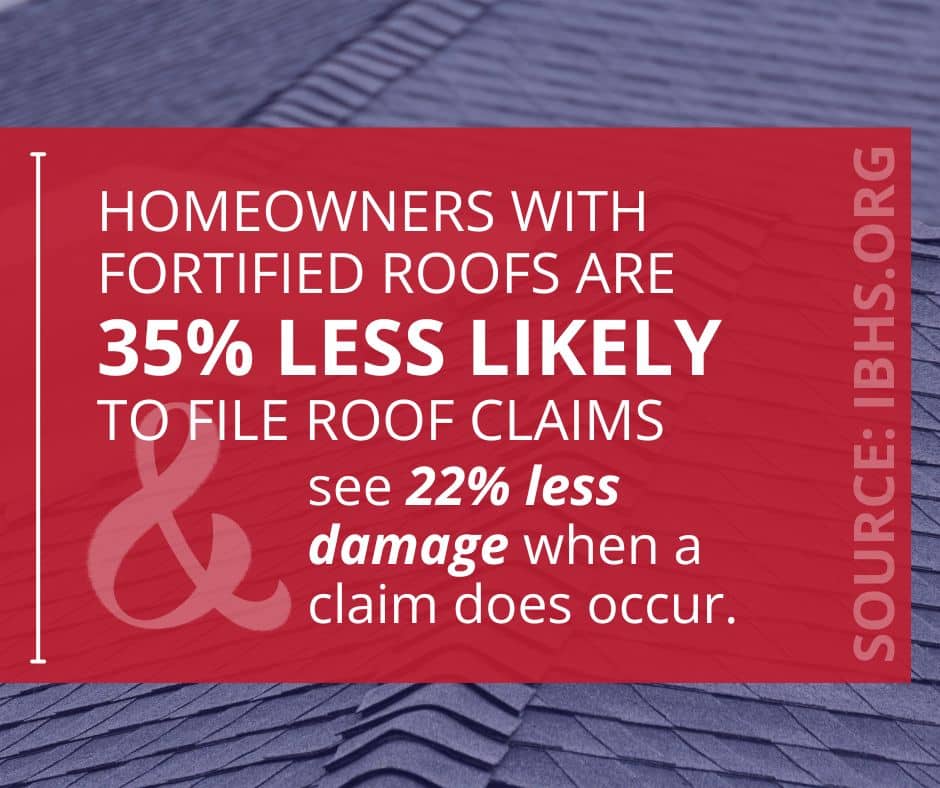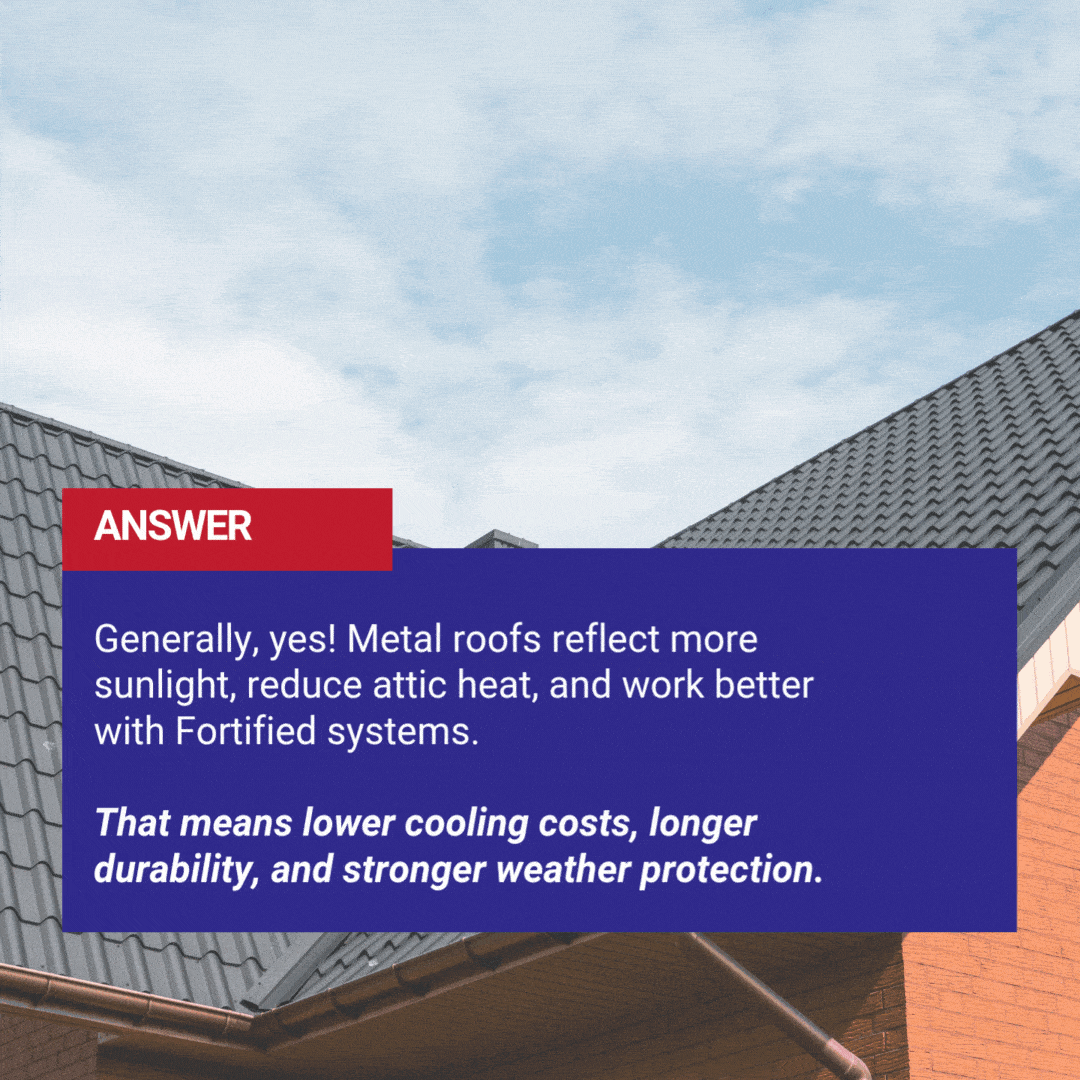Choosing a roof isn’t just about curb appeal or cost. The right material can affect your comfort, energy bills, and even your home’s long-term durability. One of the most common homeowner questions is whether a metal roof is more energy efficient than shingles.
In many cases, metal roofs do offer better energy performance, but the full picture depends on your region, ventilation, attic insulation, and how the roof is installed.
This guide walks through how each material performs, what really makes a roof energy efficient, and how to decide what’s best for your home.
What Makes a Roof Energy Efficient?
Several primary factors influence a roof’s overall efficiency…
- Solar reflectance (albedo): Light-colored and reflective surfaces bounce sunlight away instead of absorbing it
- Thermal emittance: Materials that release heat quickly help keep the internal attic space cool
- Proper ventilation and insulation: These features work together with your roof to minimize heat transfer
- Installation quality and underlayment: Proper sealing prevents gaps that allow heat infiltration
- Fortified Roof construction: Strengthens your home against severe weather while also preserving energy efficiency by sealing vulnerable areas that could otherwise lead to heat loss or moisture damage
High reflectance and proper design help your HVAC run less, reducing cooling bills and improving comfort. Studies from DOE and ORNL show that proper roof venting combined with high reflectivity reduces attic heat gain by as much as 70%!

How Metal Roofing Performs
Metal roofing has become more popular, especially in hot climates and storm-prone areas. When installed properly, it offers several efficiency advantages:
Reflects More Sunlight
Metal surfaces, especially those with light colors or specialized coatings, reflect solar radiation. Studies report up to 40% reduction in cooling costs compared to asphalt shingles.
ENERGY STAR–rated metal roofing products meet strict criteria for solar reflectance and performance.
Cool Roof Options
Many metal roofs qualify as “cool roofs,” which means they reflect more sunlight and absorb less heat than traditional roofing. These are ideal for homes in warm, sunny regions.
Lighter Weight, Stronger Materials
Panels made of metal are lightweight but strong. In some cases, they can be installed over an existing shingle roof. This extra barrier can add thermal resistance if done correctly.
FORTIFIED Compatibility
Metal roofs are also a good match for Fortified Roof construction, which strengthens homes against severe weather. Knockout Inspections is certified to evaluate and document Fortified Roof systems, which can help homeowners qualify for insurance discounts and add resale value.
Lasts Longer
Metal panels often last 40 to 70 years, and can retain up to 95% of their reflective capacity over time. Conversely, asphalt roofs often lose 20–40% over time.
How Asphalt Shingles Perform
Asphalt shingles are the most common roofing material in the U.S. They’re often cheaper up front but come with tradeoffs when it comes to energy efficiency.
More Heat Absorption
Traditional asphalt shingles absorb a lot of heat. On hot days, this can raise attic temperatures and make your HVAC system work harder.
Limited Reflective Options
Some brands offer ENERGY STAR–rated shingles, but these are often more expensive and not widely used in older homes or budget-driven projects.
Shorter Lifespan
Shingles typically last 15 to 30 years and are more prone to damage from wind, hail, and temperature swings.
Less Fortification
Standard shingle roofs may not qualify for Fortified Roof status unless additional measures are taken during installation. This could affect your ability to get certain insurance savings or satisfy stricter building standards in storm zones.
Which Roof Is Better for Your Climate?
Hot or Sunny Climates
Metal roofs generally perform better. Metal roofs with reflective coatings often deliver the biggest savings, reducing system load by up to 50% in controlled settings.
Cold or Snowy Climates
Both types can work if paired with solid insulation and ventilation. Metal roofs shed snow quickly and are less prone to ice damming, which helps protect your structure over time.
Storm-Prone Regions
Metal roofs usually provide better wind resistance and durability. If you live in a hurricane or hail-prone area, metal paired with Fortified Roof installation can give you both energy savings and better protection.
What About Cost?
Shingle roofs typically cost less upfront and are often chosen for budget-conscious projects. However, metal roofs can offer better long-term value. They tend to last two to three times longer than shingles and require less maintenance over the years. That durability, combined with potential energy savings, can make up for the higher installation cost over time.
When it comes to energy efficiency, metal roofing has a clear edge. A cool metal roof can reduce summer energy use, helping to lower utility bills in hot climates. While ENERGY STAR-rated shingles can also help with heat reflection, they generally provide more modest savings and are less efficient overall.
If you’re planning to stay in your home for many years, or you’re looking to invest in long-term comfort, protection, and efficiency, a metal roof may offer the strongest return on investment.

Installation and Inspection Matter More Than You Think
Even the best roofing material can underperform if it’s not installed correctly. That’s where inspections come in.
Knockout offers:
- Blower door testing to detect leaks and drafts that raise energy costs
- Manual D duct design evaluation to improve airflow and efficiency
- Fortified Roof inspections that document resilience and help qualify for insurance discounts
- Pre-installation roof inspections to identify risks before your contractor begins
These services help homeowners make informed choices and confirm that their investment performs as expected.
Common Roofing and Energy Questions
Will a metal roof make my home hotter in the summer?
No. Although metal can get hot to the touch, its reflectivity keeps your attic cooler than dark shingles.
Do reflective shingles work as well as metal?
Reflective shingles can help, but most still absorb more heat than coated metal panels. If you’re focused on efficiency, metal wins in most climates.
Is a Fortified Roof only for metal?
No. Shingle roofs can be retrofitted to fit FORTIFIED standards, but the process may require specific nailing patterns, deck protection, and sealed seams. An inspection can confirm eligibility.
Does ENERGY STAR roofing really matter?
Yes. ENERGY STAR–rated products meet national efficiency standards and may qualify you for rebates or utility incentives.
Can I improve my roof’s efficiency without replacing it?
Sometimes. Better attic insulation, sealing air leaks, and improving ductwork can all help. Knockout’s testing services pinpoint the most effective changes.
When to Call a Professional
If you’re unsure which roofing material is best for your home, or if you want to verify your current system’s performance, schedule a professional inspection.
Knockout Inspections can evaluate:
- Current roof condition
- Ventilation and airflow
- Blower door test results
- Energy loss hotspots
- Fortified Roof eligibility
These insights give you a clear picture of how your roof is performing and what upgrades would actually make a difference.
Final Thoughts
Metal roofs tend to be more energy efficient than shingles, especially in sunny, storm-prone, or long-term living situations. But the right choice depends on your goals, your climate, and your whole-home setup.
If you’re investing in a new roof, it pays to start with a full inspection. Whether you’re looking for energy savings, better durability, or Fortified Roof certification, Knockout Inspections gives you the insights and data to build smarter from the top down.

